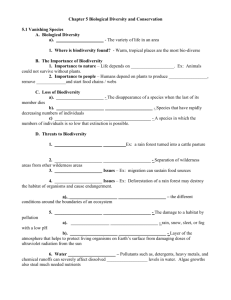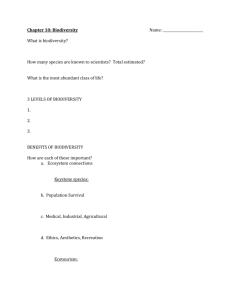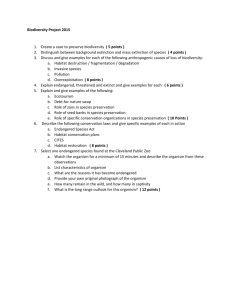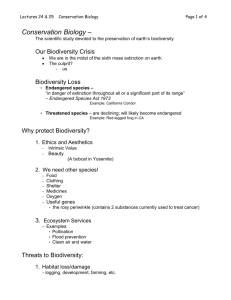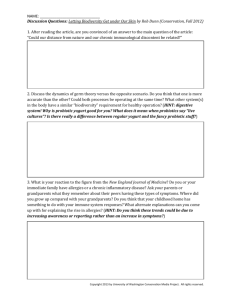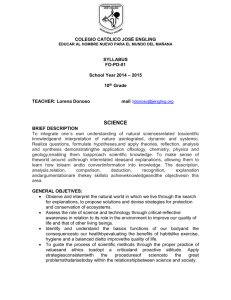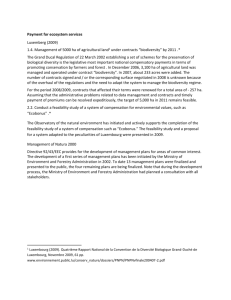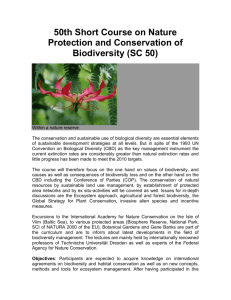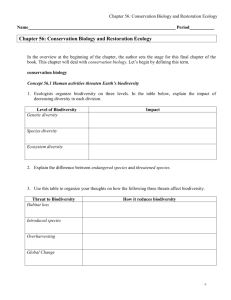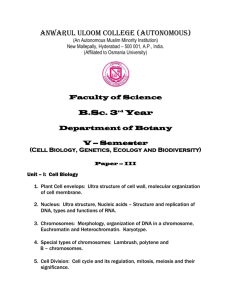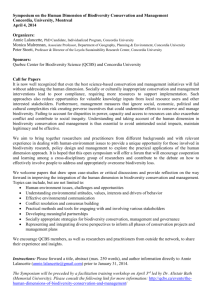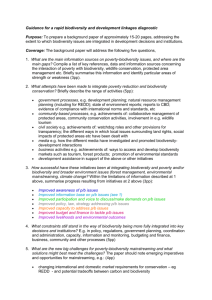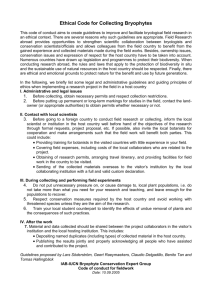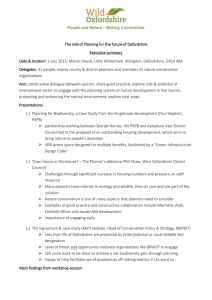Topic 4 Previous Test Questions
advertisement
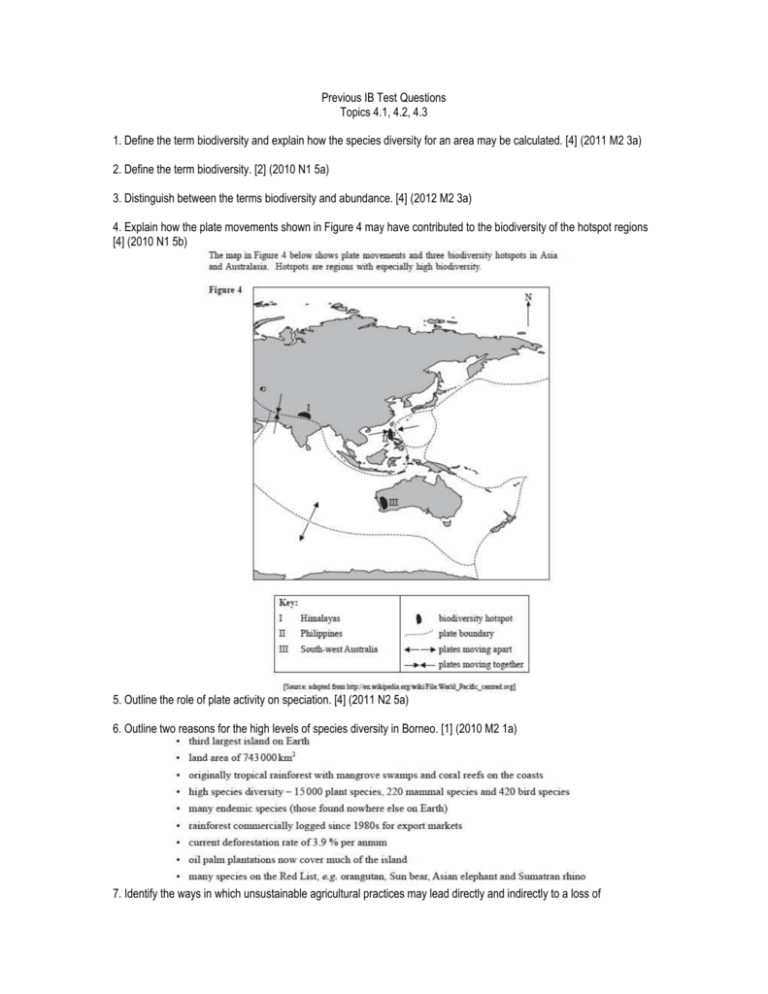
Previous IB Test Questions Topics 4.1, 4.2, 4.3 1. Define the term biodiversity and explain how the species diversity for an area may be calculated. [4] (2011 M2 3a) 2. Define the term biodiversity. [2] (2010 N1 5a) 3. Distinguish between the terms biodiversity and abundance. [4] (2012 M2 3a) 4. Explain how the plate movements shown in Figure 4 may have contributed to the biodiversity of the hotspot regions [4] (2010 N1 5b) 5. Outline the role of plate activity on speciation. [4] (2011 N2 5a) 6. Outline two reasons for the high levels of species diversity in Borneo. [1] (2010 M2 1a) 7. Identify the ways in which unsustainable agricultural practices may lead directly and indirectly to a loss of biodiversity. [5] (2011 M2 3b) 8. Explain why colonization by alang-alang grass causes a reduction in biodiversity. [2] (2010 M2 1c(ii)) 9. Explain how human actions can reduce species diversity in two named ecosystems you have studied. [6] (2010 M2 3b) 10. Population dynamics can be defined as ‘the study of changes and the reasons for changes in population size.” Discuss why an understanding of the population dynamics of an endangered species is essential to the efforts for its conservation. [8] (2010 N2 5c) 11a. With reference to Figure 8, calculate the number of known amphibian species which are classified as endangered or critically endangered. [1] (2011 M2 1f) 11b. State two factors used to determine a species Red List conservation status of a species. [1] 11c. State an economic, an ecological, and an ethical argument for the preservation of species diversity. [3] 12. Outline four factors that are used to determine the conservation status of an organism on the Red List. [2] (2010 N1 5c) 13. Outline, giving reasons, two factors used to determine a species’ Red List conservation status. [4] (2010 M2 3a) 14. Figure 4 shows the Red List conservation of eight species from the marshes. List two factors used to determine a species’ Red List conservation status. [1] (2012 M2 1b) 15. The Corn Bunting, the Grey Partridge, the Linnet and the Yellowhammer are all birds with Red List conservation status. Other than reduction in population size, list two factors which are used to determine a species’ Red List conservation status. [2] (2011 N1 3f) 16. With reference to Figure 8, explain why researchers examined economic and cultural factors as well as ecological factors when they measured the “restoration potential” for Plains bison herds in different locations. [3] (2010 N2 1e) 17. With reference to Figure 2 and Figure 9, calculate the percentage of land area of Borneo that would be protected by the “Heart of Borneo” project. [1] (2010 M2 1e) 18. Compare and contrast the role and activities of intergovernmental and non-governmental organizations in preserving ecosystems and biodiversity. [8] (2011 N2 5c) 19. Using Figure 7, explain why a barrier to both entry and exit is needed in the protected area at Samboja. [2] (2010 M2 1c) 20. State two criteria that should be used to design a protected area for tigers. [2] (2012 M1 1d) 21. Justify which criteria you think should be used to the success of a conserved area. Evaluate the success of a named protected area using the criteria you have identified. [7] (2012 M2 5c) 22. The World Wildlife Fund (WWF) estimates that there are now more tigers in captivity than in the wild. Evaluate the use of zoos for the preservation of the tiger population. [3] (2012 M1 1e)

